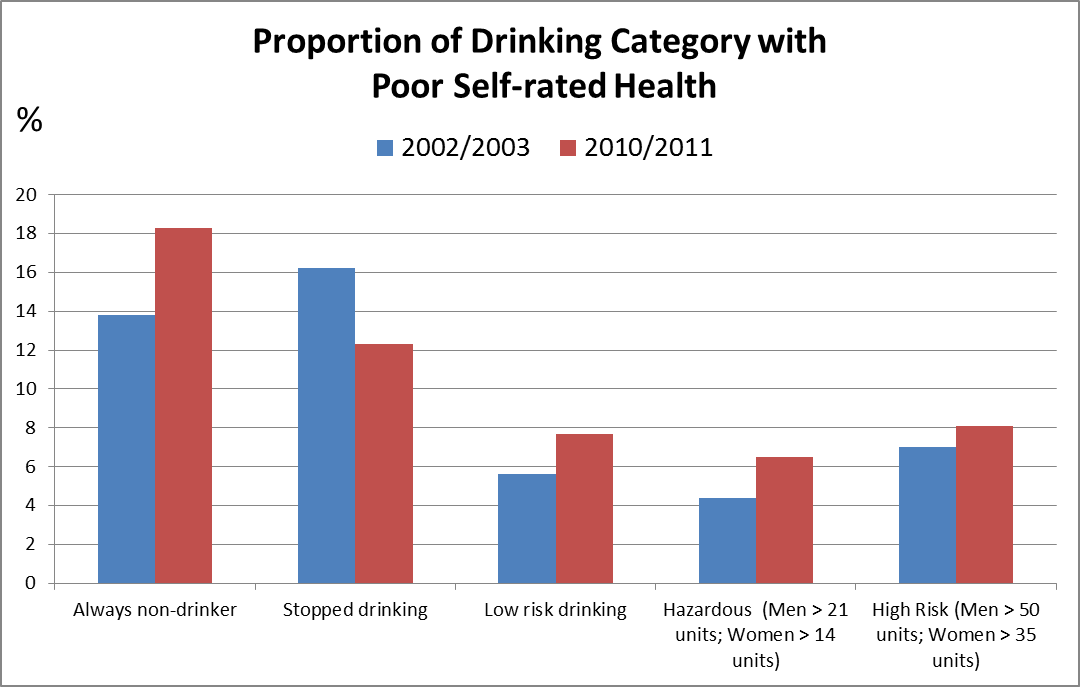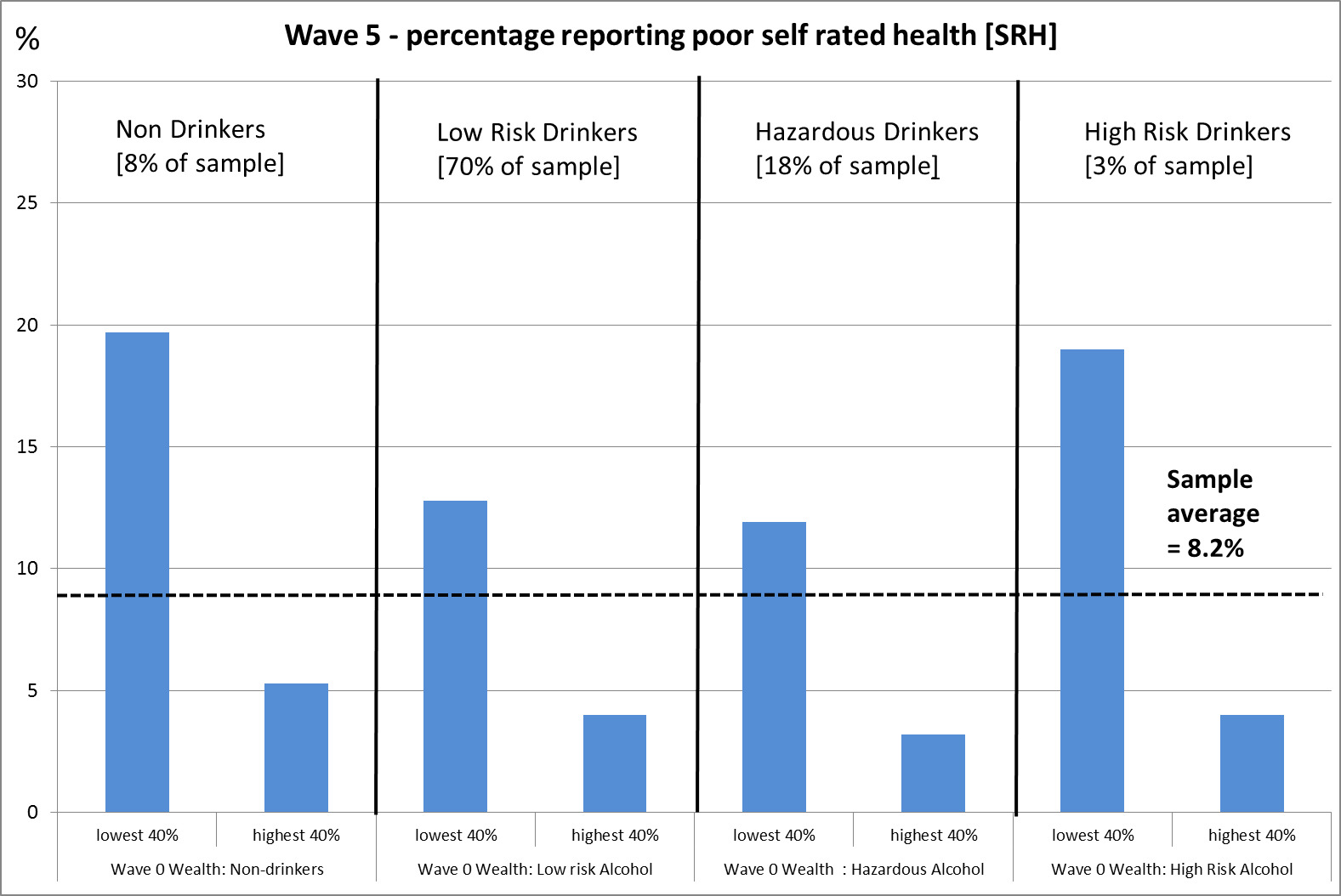
The link between alcohol and self-rated health
Our research reports that older people who drink substantially more than the recommended guidelines have just as good health as those who drink below the limits. Alcohol consumption at baseline, above or below the recommended guidelines, did not predict future health. The group with the worst long term health were those who never drank alcohol.
On the face of it, these findings seem extraordinary and seem to defy both the scientific evidence and common sense. After all there is extensive research linking alcohol consumption to a range of illnesses. A study published in the Lancet ranked alcohol as the most harmful drug ahead of heroin and crack cocaine.
This perception of the dangers associated with alcohol consumption has been reinforced by extensive media coverage about the drinking habits of older people in England. The headlines suggest that there is an epidemic of harmful drinking among older affluent adults.
This is encapsulated by one newspaper article which states that “although affluent middle-aged people often appear to look after themselves by eating well and exercising regularly, they are actually far more likely to drink too much than their less successful peers”.
However the headlines are questionable since the research on which it is based found that ‘harmful drinking’ was actually linked with good health and only states that there may be ‘hidden’ harms awaiting this group of affluent drinkers.
Another recent study among older adults also reported high levels of ‘unsafe’ levels of drinking but found no association between unsafe drinking and a range of illnesses.
By using the phrases ‘unsafe’ and ‘harmful’, the impression is given that adverse outcomes were directly linked to alcohol consumption. In fact no such link was identified, yet these studies have been interpreted by public health experts as supporting the need for more education about alcohol and treatment for harmful drinking among older people.
What is ‘harmful’ drinking?
According to the UK Government guidelines it is defined as more than 21 units per week for adult men and over 14 units per week for adult women. High risk drinking is associated with over 50 alcohol units per week for adult men or over 35 units per week for adult women. These recommendations are a “best judgement in light of the evidence, and were reached having taken into account a number of areas of uncertainty and inaccuracy”.
What our research adds to this picture is long term follow up of different drinking profiles. Are the predictions of hidden harm borne out? Our study followed people for ten years and found that ‘harmful’ drinking was not associated with poorer health. In fact, as the graph below shows, no amount of drinking was associated with poor health and only non-drinkers reported high levels of poor self-rated health.

One study suggested that abstainers may include former problem drinkers with existing health problems and may be atypical compared to drinkers in terms of social or behavioral factors. One notable feature of the graph is that those who quit drinking showed an improvement in their health. However the level of their drinking prior to quitting is unknown.
We also found that wealth is a much better long term predictor of self-rated health than alcohol consumption. The graph below shows that for all drinking patterns those with higher wealth reported much lower levels of poor self-rated health than those with lower wealth.

What are the implications of these findings?
Our research does not address all the health concerns related to alcohol. Self-rated health, although strongly associated with long standing illness, is only one outcome and has obvious limitations. There may also be selection bias as all participants in this study had to be at least 50 years old and living in the community. It may be that alcohol-related harm occurs earlier in the life course.
Also heavy drinkers may under-report their true consumption in surveys. With these caveats, it is notable that only 0.3% of the sample reported drinking more than 100 units of alcohol per week. This is the amount of drinking that according to a paper in The Lancet “is probably the minimum associated with significant liver damage”.
In summary, the headlines on harmful alcohol drinking among affluent people aged 50 or over in England may mask more complex and interesting facts about the relationship between alcohol, wealth and health.
Comments